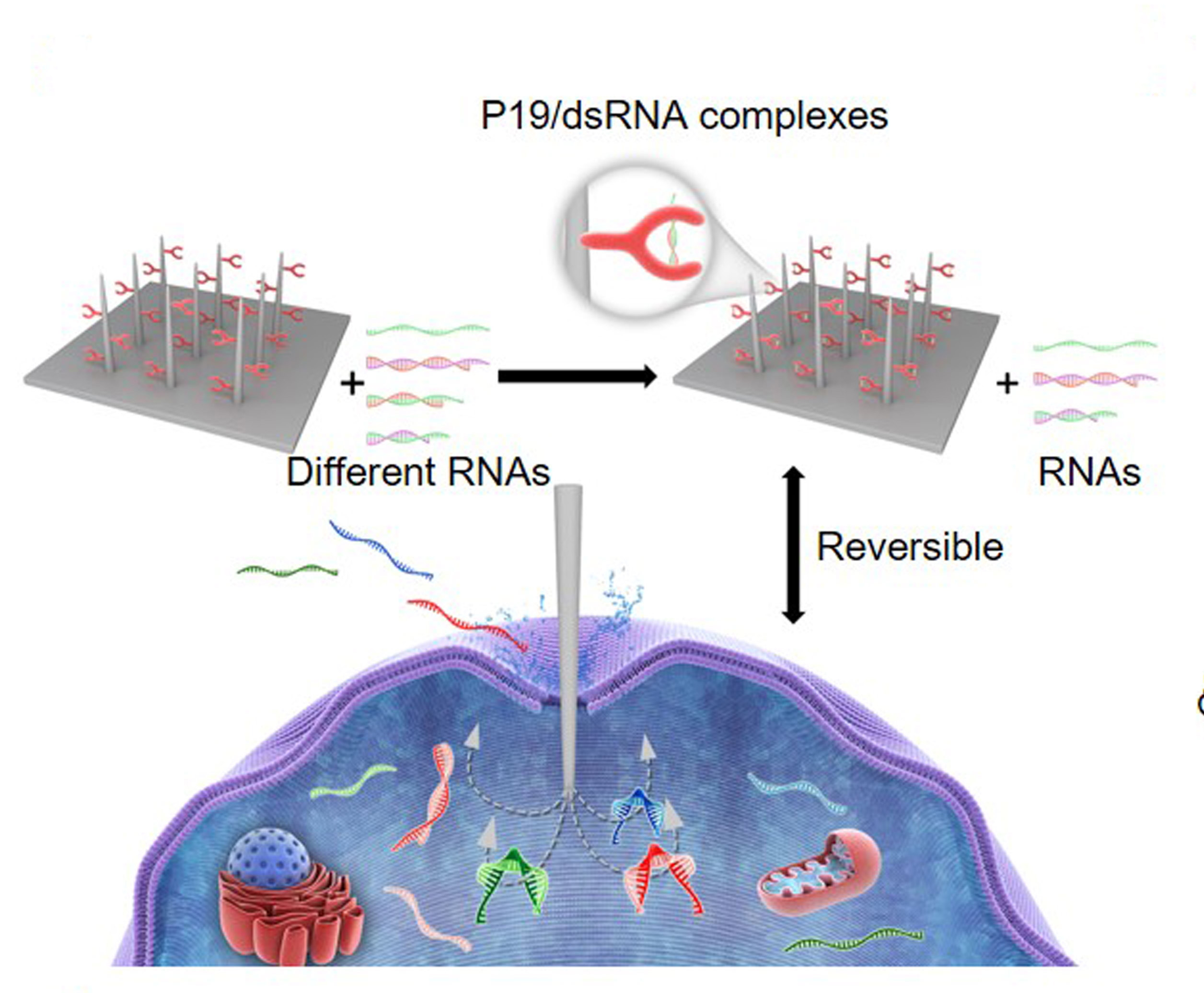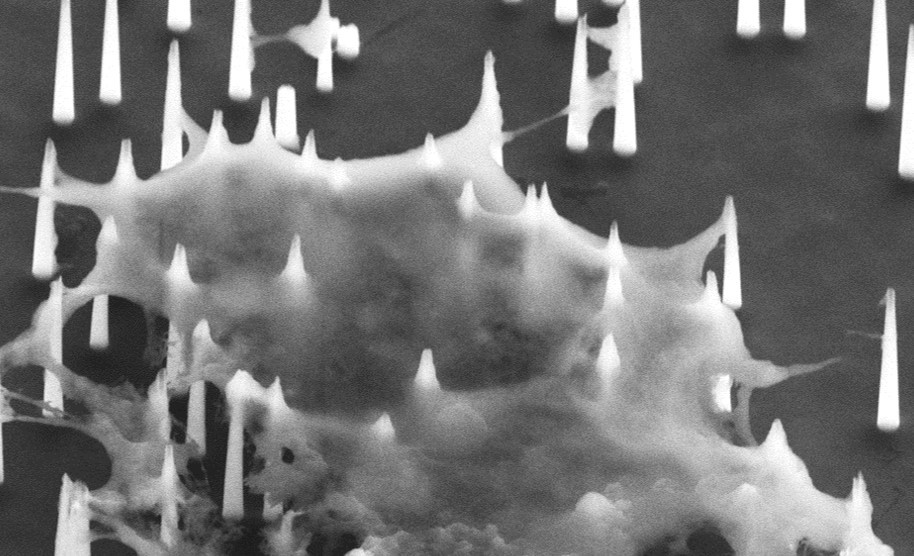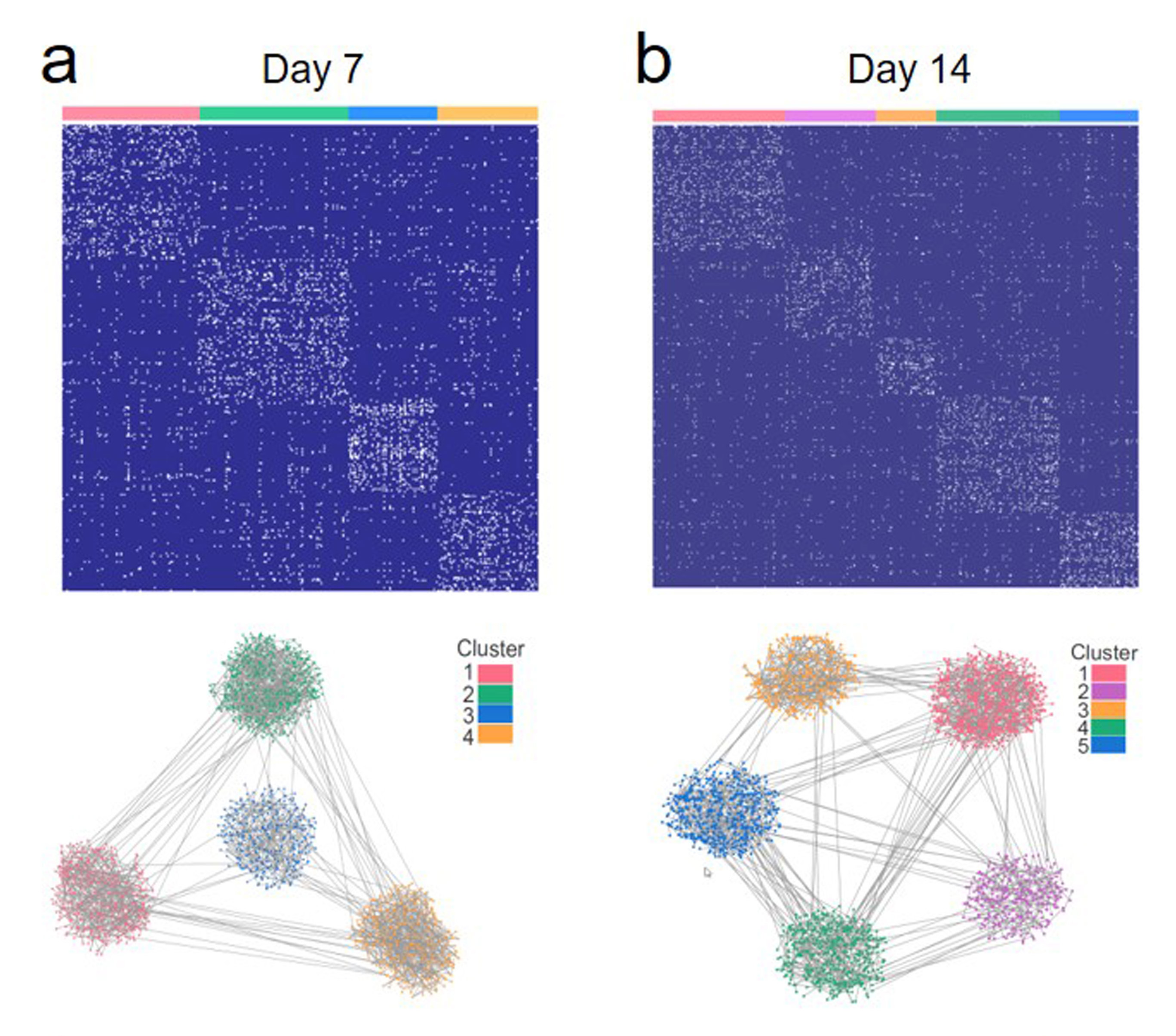Intracellular biopsy technique for fast microRNAs profiling in living cells
MicroRNAs (miRNAs) are gaining more attention in researches of different human diseases (e.g. cancer) because changes in miRNA expression are frequently associated with abnormal cellular functions. To achieve fast and highly sensitive profiling of miRNAs, a research team from City University of Hong Kong (CityU) has developed a novel intracellular biopsy technique that isolates targeted miRNAs from living cells within around 10 minutes by using diamond nanoneedles. The technique is simple and can be applied to other aspects, from the nucleic acid testing of viruses (e.g. COVID-19) to early cancer screening.
The research was led by Dr Shi Peng, Associate Professor of Department of Biomedical Engineering (BME) at the University. Their findings were recently published in the scientific journal Science Advances, titled “High-throughput intracellular biopsy of microRNAs for dissecting the temporal dynamics of cellular heterogeneity”.
Quasi-single-cell miRNA analysis
MiRNAs are short non-coding RNA fragments involved in post-transcriptional regulation of gene expression. They profoundly regulate different biological processes, such as cell differentiation, proliferation, and survival.
Currently, polymerase chain reaction (PCR) is the most prevalent method for miRNA analysis. However, it comes with high cost, complex procedures, as well as long turnover time, due to processes like isolation, purification, and amplification of RNAs from cellular lysates. Also, traditional PCR only gives an averaged measurement for thousands of cells, regardless of the fact that cells could differ from one to another. This issue is especially important for the identification of rare cells, such as cancer stem cells, which is one of the major factors causing cancer relapse and metastasis.
As an alternative, the CityU team has developed a high-throughput technique called “inCell-Biopsy”, which is used to substantially simplify the experimental operation in a way that isolation, purification, and amplification of RNAs are no longer required. Hence, the processing time is reduced from hours to just around 10 minutes.
The technique is based on a “molecular fishing” system previously developed by the team. It involves the use of an array of diamond nanoneedles as “fishing rods” and P19, a kind of RNA binding protein, as “fishing hooks”. The P19 can bind to all available double-strand RNAs with a length of 19–24 nucleotides. The “fishing rods” were used to puncture the cell membrane and then directly pull out multiple miRNA targets captured by the “fishing hooks” while keeping the cells alive. Subsequent visualization of the “fishing results” on each nanoneedle thus enables a quasi-single-cell miRNA analysis.
The “inCell-Biopsy” technique involves the use of diamond nanoneedles as “fishing rods” which are functionalized with RNA binding protein P19 as “fishing hooks”. Nanoneedles puncture cell membranes and then directly pull out multiple miRNA targets captured by the “fishing hooks” while keeping the cells alive.
“Currently, we can simultaneously pull out 9 miRNA targets in each puncture; the number of targets can be further expanded with more optimization. One nanoneedle patch can be cleaned and reused for more than 50 times,” explained Dr Shi. The CityU patented nanoneedles were fabricated by Professor Zhang Wenjun, Chair Professor of Materials Science.

Capturing the change of miRNA expression in the same cell population at different time
Unlike PCR-based methods requiring cell sample to be lysed, the cells are still alive after the nanoscale puncture. Therefore, researchers can analyze the same cells multiple times to monitor the fluctuation of miRNAs expression associated with cellular activity. This means researchers can observe how the cells evolve by comparing the miRNA profiling results. As a proof-of-concept, the researchers applied inCell-Biopsy on mouse embryonic stem cells over their differentiation towards motor neurons.

“From the results, we can obtain information about the percentage of emerging cell populations originated from the stem cells. We can also tell the relationship between different cell populations. Such analysis was not possible by using existing methods,” explained Dr Shi.

The miRNA profiling results show that the cells formed four clusters (means those stem cells transformed into four types of cells) at day 7 (fig a) of differentiation, and then formed five clusters on day 14 (fig b). (Photo source: DOI number: 10.1126/sciadv.aba4971)
A potential platform for quality control of therapeutic strategies and beyond
Dr Shi reckoned that intracellular biopsy technique would provide the opportunity to quantitatively examine the temporal dynamics of miRNA expression for the same batch of cells to reveal the evolution of cellular heterogeneity in mixed cell populations. It is applicable as a quick and convenient evaluation platform for the quality control of emerging therapeutic strategies involving cell components, such as the stem cell or CAR T-cell therapies (genetically manipulating a patient's immune cells to recognize and kill cancer cells). This could enhance the effectiveness and safety of the therapies.
Besides, miRNA profiling has recently been promoted for early cancer screening in the healthcare market. The team believes this new technique could be highly translational and compatible with the existing healthcare usage, which makes such assay significantly shorter and simpler. The team has set off to test the technique in a research for colon cancer screening.
“Our technique can be used on cells other than stem cells, for example, blood cells, cancer cells or T-cells, etc. And it can be used not only for profiling miRNA, but also for different kinds of RNAs, or even applicable to the detection of COVID-19 viruses,” added Dr Shi.
The authors of the paper are all from CityU. Dr Shi, Dr Wang Xin from the Department of Biomedical Sciences, BMS, and Dr Huang Linfeng from the same department, as well as Professor Zhang Wenjun, are the corresponding authors of the paper. The co-first authors of the paper include Dr Wang Zixun from BME, Qi Lin from BMS, and Dr Yang Yang, a CityU alumnus, who is now a researcher at Shenzhen Institutes of Advanced Technology.
The study was supported by the National Natural Science Foundation of China; the Science, Technology, Innovation Committee of Shenzhen Municipality; Hong Kong Research Grants Council; and the Health and Medical Research Fund from the Food and Health Bureau of Hong Kong SAR.
DOI number: 10.1126/sciadv.aba4971
